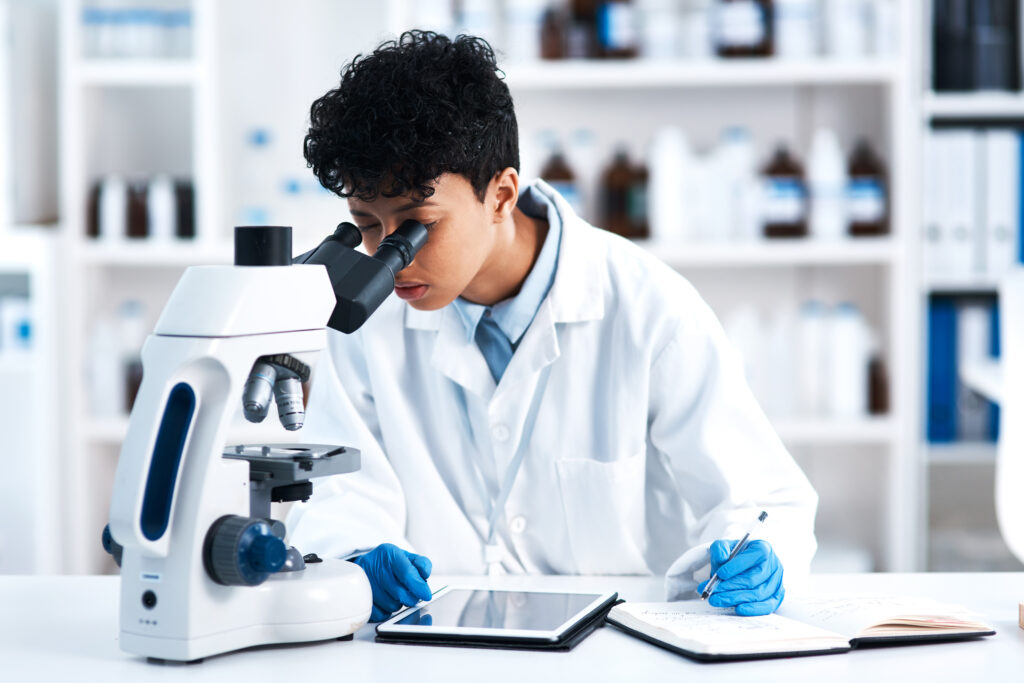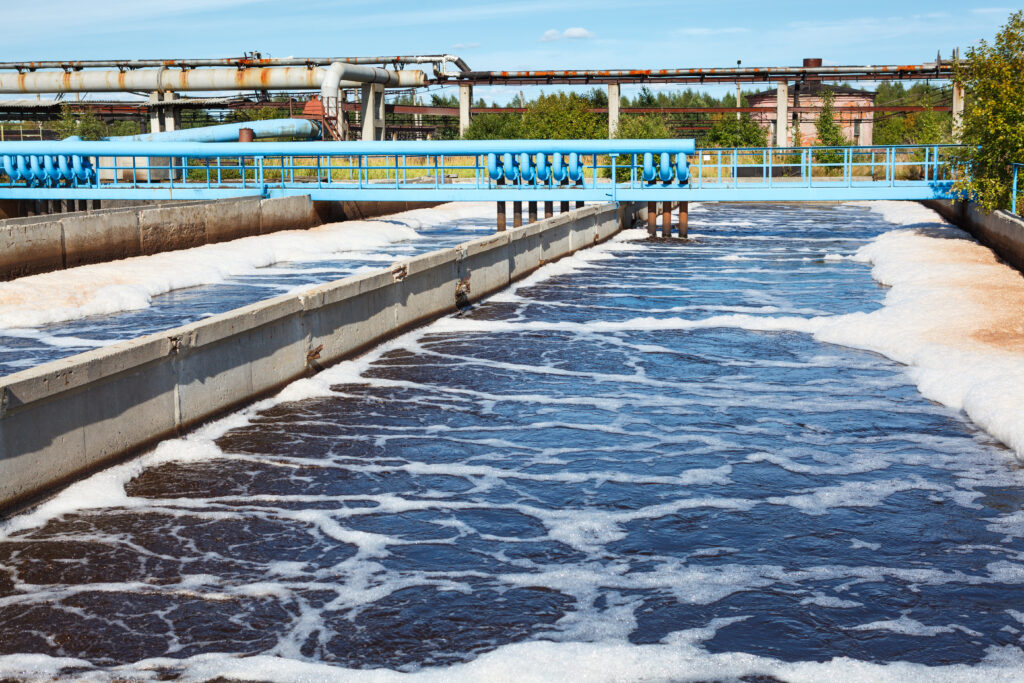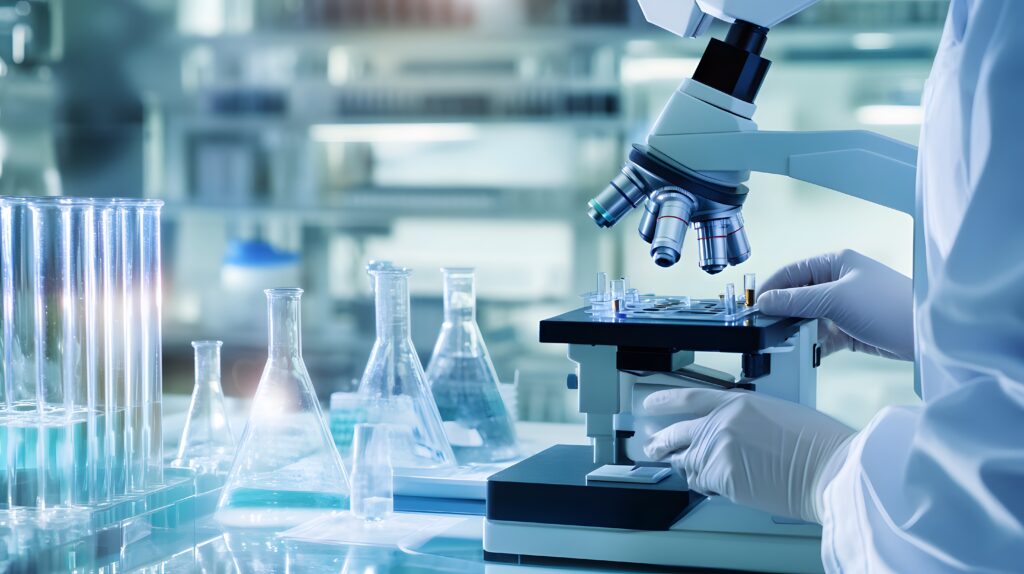Keep Up to Date with MDG
MDG News and Updates

The Real Science of Custom Fermentation
Real Science, Trusted Process, Proven Success. These are the promises we make to each of our customers when they partner with MDG, and in custom fermentation, our focus on Real Science shines through. We’re experts in the precise, complex process of growing and commercially scaling up microbial strains, using novel technologies and exploring new ideas to help you succeed. Check out a few aspects of MDG’s Real Science in custom fermentation: Strain Purity Our practice for maintaining microbial strain purity during growth and production is robust and meticulous. With our trusted methods, we’re able to ensure that your final product is exactly what you intended by screening for non-target organisms and making the effort to confirm your strain’s purity at multiple points during the process. [ Process Development This 12-week process happens before strains even reach our commercial-scale tanks. Our microbiologists find the best medium to maximize your strain’s growth, and they conduct numerous tests to find the optimal environmental variables. At the end of this streamlined workflow, your strain is ready to be scaled up! Drying Techniques Depending on the final product you’re aiming for, the drying technique for your microbial culture may differ. At […]

Probiotic Market Trends and Challenges You Need to Know in 2025
The global probiotics market is anticipated to grow at an annual rate of 14% through 2030,1 which is exciting news for both new and established suppliers and manufacturers of probiotics. However, it’s hard to leverage this popularity without knowing about the individual pieces behind the market’s growth. At MDG, we’re here to guide and support you on your way to success in the human health space, and that starts with understanding the major trends in probiotics and the challenges you may face. Trend: Increasing Consumer Demand Consumers are becoming more interested in health-conscious and environmentally friendly living, and probiotic sales have risen as a result of this broad shift.2 When consumers purchase probiotics to support their lifestyles, they’re most interested in maintaining and promoting gut health,3 but according to recent reports, immune system support and general health/wellness promotion aren’t far behind.1 Many people also associate probiotics with sleep improvement and inflammation reduction, prompting them to seek out products that support those health outcomes.3 Trend: Spore-Formers Outside of consumer trends, spore-forming bacteria like Bacillus have started to make a bigger splash in recent probiotic formulations. Unlike their vegetative bacteria counterparts, spore-formers are resilient enough to withstand the volatile stomach and gut […]

Why Bacillus? A Closer Look at this Powerful Probiotic Ingredient
Lactobacillus and Bifidobacterium are two genera of vegetative bacteria whose historic success in probiotic applications has made them a common ingredient in many final products. However, Bacillus, a spore-forming bacteria, is becoming increasingly more popular due to its stability in diverse applications and the new range of functionalities it offers. Exciting discoveries about Bacillus have opened a fast-growing area of the human health marketplace. Discover what makes this microorganism so powerful and how MDG can help you use Bacillus to achieve success. What are the benefits of using Bacillus in probiotics? Many of Bacillus’s advantages in probiotic products stem from its spore-forming nature. Forming spores allows Bacillus bacteria to maintain their efficacy and survive extreme environmental conditions that vegetative bacteria like Lactobacillus and Bifidobacterium may not be able to tolerate. This hardiness leads to a number of benefits, including: Greater stability: Because of its ability to form spores, Bacillus is highly stable, unlike Lactobacillus or Bifidobacterium. These two alternative, vegetative bacteria are non-spore-forming, so they typically need to go through an encapsulation process to reach the same level of stability, which can be expensive for probiotic manufacturers. Longer shelf life: With the stability of Bacillus, you can sell your product […]

Mitigate the Toughest Odors and Stains with SporActiv® CLEAR
When we formulate new industrial, institutional, and consumer (IIC) cleaning ingredients at MDG, your success is always top of mind. Our SporActiv® line includes scientifically proven products that can help you solve your customers’ challenges and reach your unique business objectives. We’re excited to introduce our newest IIC ingredient: SporActiv® CLEAR! Our most concentrated 20X formulation, CLEAR was designed with newly discovered Bacillus strains that can digest the widest variety of odor and waste materials. Learn why CLEAR stands above other market-leading ingredients as a superior microbial cleaner and discover how you can use it to enhance your product formulations. What does SporActiv® CLEAR do? CLEAR has three major functions for IIC cleaning: Waste/Stain Removal With SporActiv® CLEAR, your product can achieve a deeper clean against stains from pet accidents or food spills. The Bacillus in CLEAR penetrate deep into porous surfaces like carpet, tile, and grout, consuming any organic material left behind from a first wipedown. Plus, since Bacillus are living organisms that thrive and grow in environments rich with these waste/stain components, they continue to work hours and even days after the initial product application. FOG Digestion In places like drains and grease traps, fats, oils, and grease […]

Biotifx® BLOCK: A Smarter Solution for Collection System Treatment
Collection systems are essential parts of the wastewater treatment process, and any operational interruptions can have a negative impact on their efficiency. Typical chemical and/or reactive treatments can also put a financial strain on system operators. Discover the power of Bacillus-based bioaugmentation to proactively treat collection systems, and learn how our newest product, Biotifx® BLOCK, makes treatment even simpler with an easy-to-use dosing method, saving you and your customers time and money. Breaking Down the Problems and Exploring Solutions Although every situation is unique, collection systems tend to face similar time-consuming and expensive challenges. However, our microbial products include scientifically selected Bacillus strains and micronutrient packages formulated to mitigate common wastewater treatment issues, including: Fats, Oils, and Grease (FOG) Challenge: When FOG from wastewater builds up in collection systems, a multitude of issues can arise, such as system backups, foaming, and floating solids. Getting rid of this buildup often requires physical removal. Solution: The Bacillus in our Biotifx® products reduce FOG by using it and other unwanted organic material as food, digesting and removing it from the system. Plus, Bacillus’s consumption of FOG proactively lowers the amount of accumulation in the system, which means your customers can reduce the labor […]

BoostBac™ Probiotic: Access Our Exclusive White Paper!
At MDG, innovation is at the forefront of what we do. That’s why we’re thrilled to introduce our new probiotic ingredient—BoostBac™! BoostBac™ is a synergistically formulated dual-strain Bacillus probiotic clinically proven to reduce persistent systemic inflammation throughout the body. It has also been studied for its other potential health benefits, including improved sleep. With BoostBac™, you can take your probiotic formulations to the next level, promoting health and wellness in your product lines. To showcase our research and results, we’ve written a white paper covering BoostBac™ and how it fits into the ever-evolving field of human health. Reach out to us for a copy and receive insights on the probiotic market, an overview of the BoostBac™ clinical trial results, and information on how the functionality of our new ingredient can help you differentiate your products and achieve your business goals. Interested in finding out more? Contact us today to get our white paper for free! MDG is the probiotic provider that helps you differentiate faster without the added risk of investing your own resources in the development process

Trusted Process: MDG’s Gold Standard
MDG’s customer-centric approach to quality manufacturing and support ensures consistent, repeatable results for our customers. This is done through our trusted process; our gold standard at MDG. Can you be confident in our manufacturing process yielding consistent results? The answer is YES! This is our commitment to our customers. To produce consistent, quality cultures and finished products MDG uses a quality management system with Good Manufacturing Practices (GMP) as the foundation for all our manufacturing. In addition, our food and feed cultures and blending are FSMA complaint and 3rd party HACCP certified. To provide the purest of strains and to mitigate risk we ensure meticulous DNA testing, safety protocols, third-party validation, and in-field trials. We put a very high emphasis on making sure that the cultures we produce are pure and that they’re not only free of unwanted pathogens but of the utmost quality. Additionally, we perform in-house testing throughout the entire production process, including genetic screening for the strains we produce and ensuring that every tank we produce only contains the one strain we’re looking for. We also gauge the success of those tank runs by analyzing the end processing and optimizing again. A company can quickly take a […]

Defining Odors and Discovering Solutions with SporActiv®
In the industrial and institutional cleaning markets, odors are a major challenge, and you want to create effective solutions for your customers dealing with odor issues. This process can be daunting, however, as there are so many types of these unpleasant smells and a multitude of ways to approach treatment. At MDG, we’re passionate about providing you with the education and tools you need to understand your customers’ challenges and achieve success. Discover some common odor compounds and how MDG’s SporActiv® ingredients can help you formulate products that face odor problems head-on. Common Odor Compounds: Where They Appear and How They Smell While each cleaning situation is different, you can still expect to see similarities in the odors found across many locations and surfaces. These include: Sulfur-Containing Compounds What: Hydrogen sulfide, dimethyl sulfide, and mercaptans are all examples of sulfur-containing compounds. Where: These odor compounds are typically found in places where organic material is breaking down, including bathrooms, septic systems, and drains. Smell: If your customer is dealing with odors caused by sulfur-containing compounds, they may smell rotten eggs or cabbage, skunk, or garlic. Volatile Fatty Acids (VFAs) What: VFAs encompass a wide variety of compounds, but some of the […]

Upcoming Webinar: How Bacillus Treatment Impacts the Microbial Community of Wastewater Systems
As a distributor of biological wastewater treatment products, your customers may be curious about how these products will affect the health of their system. In our upcoming webinar, we’ll explore the science behind how Bacillus works to treat wastewater without taking over or negatively impacting the native microbial population, and the beneficial impacts it can have on a system. Jennifer Cray and Josiah Menako, two of our Technical Support Leads, will cover the basics of wastewater microbial ecology and share some data to demonstrate the positive effects Bacillus has on a system and its native beneficial bacteria. Mark your calendars for Wednesday, February 26, at 1:00 P.M. CST to watch our experts present “How Bacillus Treatment Impacts the Microbial Community of Wastewater Systems”. Secure your spot for free by registering here!

An Inside Look at Process Development for Custom Microbial Fermentation
The custom microbial fermentation process starts well before your strain enters our fermentation tanks to be grown for commercial use. In fact, it begins on a relatively small scale with our process development (PD) team. Our team’s process is thorough and precise, ensuring confidence in the integrity of your product when it comes time to scale up your strain in larger tanks. But what exactly does process development for custom microbial fermentation entail, and how do we set ourselves above the rest with our method? Process Development Timeline At MDG, process development is comprised of three phases: Phase 1: Strain Identification Our PD team starts by performing multiple colony picks and/or extractions on a strain sample you send us, ensuring that what we received is a single strain and that there hasn’t been any contamination of the sample. Next, we make our own stocks of the sample strain and compare those with the source plate containing the original strain. If the two strains match, our team streaks out the strain they produced and sends it back to the customer for confirmation. Once we get your go-ahead, our team moves into Phase 2. Phase 2: Media Optimization The second phase is […]